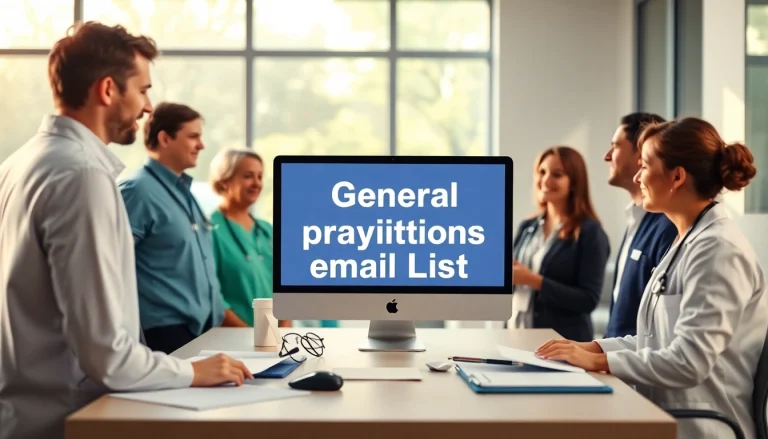
Understanding Document Authenticity
In an increasingly digital world, the ability to verify the authenticity of documents has become paramount. Whether you are dealing with contracts, academic transcripts, or financial documents, knowing How do I know this document is real is crucial for preventing fraud and ensuring trust in your transactions. This article delves into the various types of documents that require verification, the significance of authenticity, and practical techniques for discerning real documents from counterfeits.
What Does it Mean for a Document to be Real?
A real document is one that is genuine, properly executed, and carries the authority it claims to represent. Such documents typically bear certain characteristics—both physical and digital—that attest to their legitimacy. Understanding these features is the first step in developing a comprehensive verification process.
Common Types of Documents That Require Verification
Various documents need verification, each with its unique characteristics and purposes:
- Legal Documents: Contracts, affidavits, and divorce decrees often require rigorous verification due to their legal implications.
- Identification Documents: Passports, driver’s licenses, and ID cards are prime targets for forgery and must be carefully examined.
- Financial Documents: Bank statements, tax returns, and pay stubs often have serious ramifications if found fraudulent.
- Academic Transcripts: Degrees and certifications can significantly affect career prospects, making their verification vital.
- Certificates and Licenses: From marriage certificates to professional licenses, verifying these documents ensures authenticity and compliance with regulations.
The Importance of Verifying Document Authenticity
The risks associated with accepting fraudulent documents can have far-reaching consequences, including financial loss, legal ramifications, and reputational damage. In both personal and business contexts, the integrity of information is critical for making informed decisions. Therefore, understanding the nuances of document verification is essential.
Physical Features to Examine
Identifying Tactile Elements and Security Features
Many authentic documents are designed with security features meant to deter forgery. Tactile elements, such as embossed seals, intaglio printing, and UV patterns, can often be felt by touch and may involve specialized ink or paper:
- Embossed Seals: These seals provide a tactile indicator of authenticity, often seen on legal and official documents.
- Intaglio Printing: This technique provides a raised effect and is commonly used on currencies and high-security documents.
- Watermarks: Found in many official documents and papers, watermarks are created during the paper manufacturing process and are often difficult to replicate.
- Holograms: Used extensively on identification cards to prevent counterfeiting, holograms shift in appearance when viewed from different angles.
Assessing Paper Quality and Print Technologies
The quality of the paper used can be a telltale sign of a document’s legitimacy. Authentic documents often utilize high-grade paper with unique textures or finishes. Furthermore, the printing technology employed can also signal authenticity:
- Ink Type: Genuine documents might utilize dyes that react to ultraviolet light or temperature.
- Printer Method: Laser printing often leaves a different texture compared to inkjet printing, which may be relevant for certain types of documents.
Recognizing Signs of Forgery in Documents
When evaluating a document, look for inconsistencies that may indicate forgery. This includes but is not limited to:
- Uneven Margins: Authentic documents typically have uniform margins and professional layouts.
- Inconsistent Font: A differing font style or size can suggest alterations or fakes.
- Blurred Images or Text: Genuine documents will have crisp, clear text and images.
- Unusual Signs of Alteration: Indicators like correction fluid or tape can suggest tampering.
Digital Document Verification
How to Verify PDFs and Electronic Files
With the rise of digital documents, methods for verification must include electronic formats. PDF files and other digital documents can be checked through several techniques:
- Check for Digital Signatures: Many legitimate documents are signed digitally, which can be validated through various software.
- File Verification Tools: Applications that allow you to check the integrity of the file can help ensure it has not been altered post-creation.
Using Metadata to Assess Document Authenticity
Examining the metadata of a document can reveal vital information about its creation and modifications:
- Author and Creation Date: Metadata can show who created a document and when it was made, providing context for its authenticity.
- Modifications History: This can indicate whether the document has been edited after its original creation, affecting its reliability.
Digital Signatures and Their Importance
A digital signature is a cryptographic technique that verifies the authenticity and integrity of a document. This signature provides data security through encryption and ensures that the document has not been altered after signing. Understanding the significance and function of digital signatures is critical:
- Legal Weight: Digital signatures are often legally binding, offering the same validity as a handwritten signature.
- Fraud Prevention: A strong digital signature can deter fraud through verification processes that authenticate the signer’s identity.
Technological Tools for Verification
Using AI and Software for Document Verification
Artificial Intelligence (AI) has revolutionized the way we authenticate documents, providing tools to streamline the verification process significantly:
- Automated Document Review: AI-powered software can quickly analyze documents for signs of forgery, inconsistencies, and anomalies.
- Pattern Recognition: AI can recognize patterns unique to legitimate documents, enhancing detection of fraud.
Reviewing Online Resources and Tools
There are a plethora of online tools available for verifying documents. Some services provide thorough checks against databases, while others focus on specific document types:
- VerifyPDF: An online platform that utilizes AI technology to detect fake documents efficiently.
- Document Verification Software: Various software options offer comprehensive tools for authenticity checks, which can be integrated into existing workflows.
Integrating Verification Processes in Business Operations
Establishing a verification protocol within your organization can mitigate risks associated with accepting fraudulent documents. Here are the steps to integrate verification processes into business operations:
- Training Employees: Educating staff on authentication processes and potential red flags enhances overall document security.
- Implementing Standard Procedures: Standardizing document review methods helps maintain consistency and reliability.
- Utilizing Technology: Investing in software and tools that streamline the verification process can enhance efficiency and accuracy.
Best Practices for Document Verification
Steps to Establish a Reliable Verification Protocol
Creating a robust document verification protocol requires intentional planning and execution. Key steps include:
- Identification: Clearly define which documents require verification and establish the protocols for handling them.
- Assessment: Create a checklist of features to verify when examining documents.
- Documentation: Maintain records of verified documents for future reference and auditing purposes.
Common Mistakes to Avoid in Document Verification
As with any process, there are common pitfalls that individuals and organizations may encounter in document verification:
- Overlooking Details: Failing to check all aspects of a document can lead to costly errors.
- Relying Solely on Technology: While technology enhances verification, a human element is critical for complex assessments.
- Inconsistency: A lack of standardized procedures can lead to varied results and vulnerabilities.
Case Studies: Successful Document Verification Stories
Examining real-world cases where effective document verification processes were implemented can provide insight into best practices and lessons learned:
- Financial Institution Security: A large bank implemented a new document verification protocol that included AI technology, resulting in a 60% decline in fraud-related incidents.
- University Transcript Verification: An educational institution adopted a digital signature validation process, increasing their ability to spot fraudulent transcripts by 75%.






